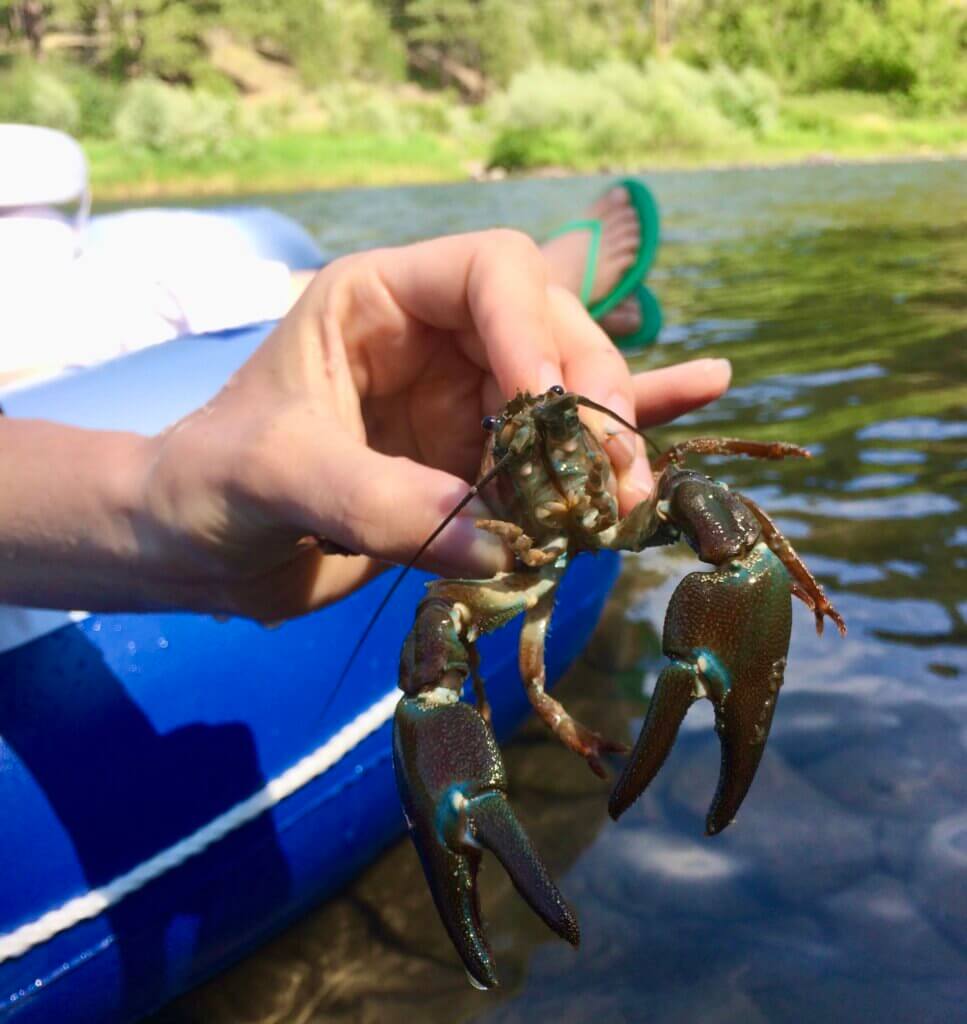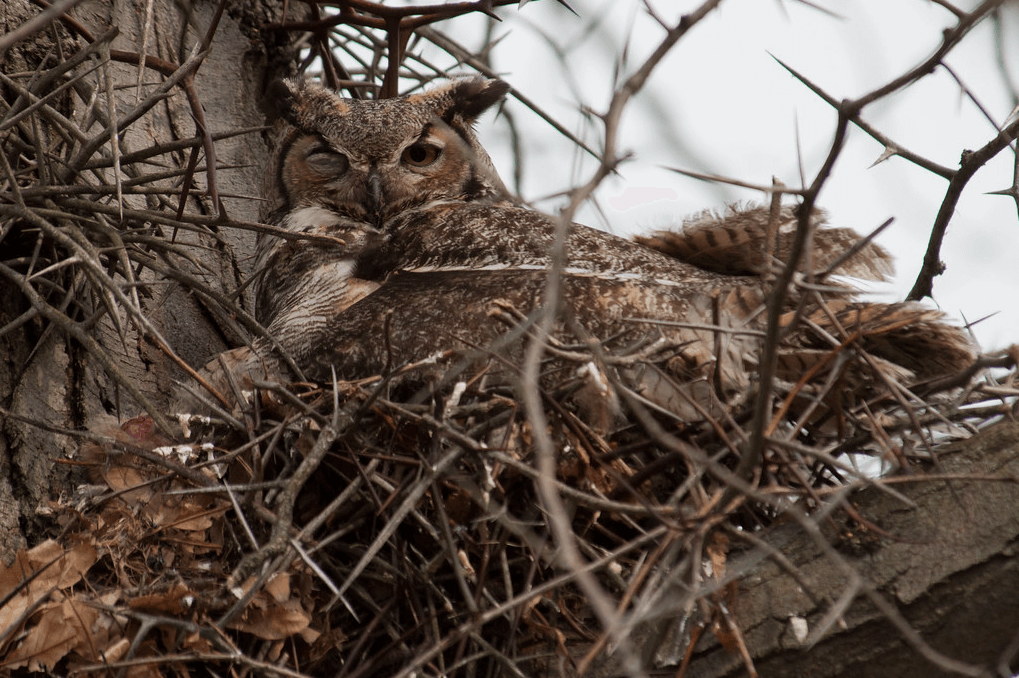Camouflaged and Colorful Crawdads
By Krys Standley
Broadcast 6.7 & 6.10.2023

Montana’s less-common crawdad, the signal crawdad, on the Blackfoot River. Note the turquoise on the claw hinge! Photo © Krys Standley.
Listen:
The most crawdads I’ve ever seen in one place were in a truck that had been taken ice fishing onto Canyon Ferry Lake and broke through at a pressure ridge, where the ice sheet had cracked into smaller, unstable slabs. The three people in the vehicle scrambled to safety before the truck sank to the lake bottom – forty feet below. The summer after, I rode along in a motorboat on a mission to salvage the truck. My dad and a friend of his scuba-dived down and filled metal drums with air to float the truck to the surface. We towed it to shore and up the nearest boat launch, and when we squeaked open the rusted passenger-side door, we found mud-colored crawdads everywhere: the bench seat, the floorboards, the bed, even the glovebox was squirming with them.
Most of the crawdads I’ve seen in Montana have been muddy brown like those and, typically, you have to look under rocks to find them. But, when I moved to Missoula, I started seeing a different type of crawdad crawling out in the open in the rivers around town. I caught one while wading in the Clark Fork River that was red, like a lobster. Another, spotted while tubing a shallow area of the Blackfoot, was brownish-blue with a bright turquoise splotch on each claw. Besides being more colorful, both were larger and more stout than the crawdads I was used to.
I was intrigued by the differences in these crawdads, otherwise called crawfish or crayfish, and when I searched out more information, I learned that North America is home to the most diverse collection of these freshwater crustaceans in the world. However, most of this diversity is clustered in more southerly places. In Montana, 98 percent of all recorded observations are of only two species. The most common of these, by far, is the virile crawdad, Faxonius virilis, a slender, brown to drab-green species found in lakes and rivers throughout the state. Its claws are covered with small bumps, and, if you take a closer look, you will see that its pincer tips are bright orange. Although I didn’t look for this feature at the time, I’m betting from their body shape and camouflaged coloring that the truckful of crawdads in Canyon Ferry were virile crawdads.
The other species, which is less common in Montana, is the signal crawdad, Pacifastacus leniusculus. Compared to the virile crawdad, its body and pincers are smoother and more robust, and its coloring is bolder—from bluish-to-reddish brown. The signal crawdad is common throughout the Columbia River basin, including the Clark Fork River and its tributaries. Its pincers are vibrantly colored, and the hinge of each claw is marked by a white or turquoise patch. This description matches the crawdads I’ve seen in the rivers around Missoula. Within each species, individual members can have a variety of colors. The duller virile crawdads can have a blue or green tinge to their pincers; the flashier signal crawdads can vary from dark to vibrant red or blue, but they can also be tan or dark brown.
These variations can be a response to environmental conditions. Crawdads have specialized cells in their exoskeletons that allow them to change color to adapt to their surroundings. The cells, called chromatophores, work to either concentrate or disperse pigment. Similar cells in chameleons and octopuses allow for a quick color change. But, for crawdads, the process is slower. It can take two to three months for a crawdad to shift its color to match the boulders, rocks, or mud of its aquatic habitat. Color expression is also influenced by behavior: Crawdads that spend more time in sunlight become more vividly colored. This can help explain the drab coloring of what I’m presuming were virile crawdads in the truck that had been at the dim lake bottom, as well as the brighter coloring of the signal crawdads crawling in the sunlit river shallows.
Having learned about some unique aspects of these two crawdad species, I’m excited for my next encounters with them. Knowing what I know now about these adaptable animals, I feel better equipped to notice their distinguishing features, and better able to appreciate them in the context of their habits and their habitats.
Every week since 1991, Field Notes has inquired about Montana’s natural history. Field Notes are written by naturalists, students, and listeners about the puzzle-tree bark, eagle talons, woolly aphids, and giant puffballs of Western, Central and Southwestern Montana and aired weekly on Montana Public Radio.
Click here to read and listen to more Field Notes. Field Notes is available as a podcast! Subscribe on Apple Podcasts or wherever you listen to podcasts.
Interested in writing a Field Note? Contact Allison De Jong, Field Notes editor, at adejong [at] montananaturalist [dot] org or 406.327.0405.
Want to learn more about our programs as well as fun natural history facts and seasonal phenology? Sign up for our e-newsletter! You can also become a member and get discounts on our programs as well as free reciprocal admission to 300+ science centers in North America!












